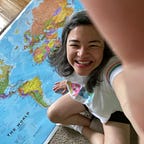General Facts About Bolivia
Bolivia, officially the Plurinational State of Bolivia, is a landlocked country in South America. It shares borders with five countries: Brazil to the North and East, Paraguay to the South East, Argentina to the South, Chile to the West and Peru to the Northwest.
Bolivia was named after Simón Bolivar, one of the great “liberators” of South America during the Spanish American Wars of Independence by his friend and another leader named Antonio Jose de Sucre. The constitutional capital of Bolivia is named Sucre after him, but the seat of the government and executive capital is La Paz.
Land
Bolivia has an area of 424,164 sq mi (1,098,581 km 2) making it the 27th largest country in the world.
Bolivia shares the second largest lake in South America with Peru: Lake Titicaca. This lake is the world’s highest lake navigable to large vessels, lying at 12,500 feet (3,810 metres) above sea level in the Andes Mountains of South America.
I dream of visiting this lake! I am utterly fascinated how they build everything out of straw! I will dedicate a post to this lake for sure!
Bolivia has one of the highest areas inhabited in the world with about a third of the country sitting high in the Andes Mountain Range. The highest point is Mount Sajama, reaching an elevation of 21,463 feet (6,542 metres).
Yeah… that’s pretty high!
Bolivia is especially vulnerable to the negative consequences of climate change. Twenty percent of the world’s tropical glaciers are located within the country, and are more sensitive to change in temperature due to the tropical climate they are located in.
Temperatures in the Andes increased by 0.1 °C per decade from 1939 to 1998, and more recently the rate of increase has tripled (to 0.33 °C per decade from 1980 to 2005), causing glaciers to recede at an accelerated pace and create unforeseen water shortages in Andean agricultural towns. Farmers have taken to temporary city jobs when there is poor yield for their crops, while others have started permanently leaving the agricultural sector and are migrating to nearby towns for other forms of work; some view these migrants as the first generation of climate refugees. (1)
This country also has hydrologically isolated areas like the Uyuni Salt Flat and the Coipasa Salt Flat with an unique variety of wildlife as well as hot springs, geysers all at the base of picturesque inactive volcanoes.
People
According to the last two censuses carried out by the Bolivian National Statistics Institute (Instituto Nacional de Estadística, INE), the population increased from 8,274,325 (from which 4,123,850 were men and 4,150,475 were women) in 2001 to 10,059,856 in 2012. In the last fifty years the Bolivian population has tripled, reaching a population growth rate of 2.25%. (1) Currently the population is estimated at 11.75 million. (3)
The population of Bolivia consists of three groups: Indigenous, mestizos (of mixed Indian and European descent), and people of European are mainly of Spanish descent. After centuries of intermixing, it is difficult to determine the proportion of each, but it is estimated that mestizos form more than two-thirds of the total, Indigenous make up about one-fifth, and people of European ancestry (whites) account for about one-twentieth of the population. (2)
Languages and religion
According to their 2009 constitution, Bolivia has 37 official languages! Spanish and 36 indigenous languages. However many indigenous people speak or understand Spanish.
Over 3/4th of its population is Roman Catholic. In the late 20th century membership has been growing in Protestant denominations, mostly Evangelicals. Bolivia also has a small Jewish community.
This is its flag and coat of arms:
Notice all the spears, the cannons and the angry? condor on the top! That llama looks safe and relaxed!
Sources:
(1) Wikipedia
(2) Encyclopedia Britannica
(3) Google
Originally published at http://myvirtualworldtrip.com on July 4, 2021.
